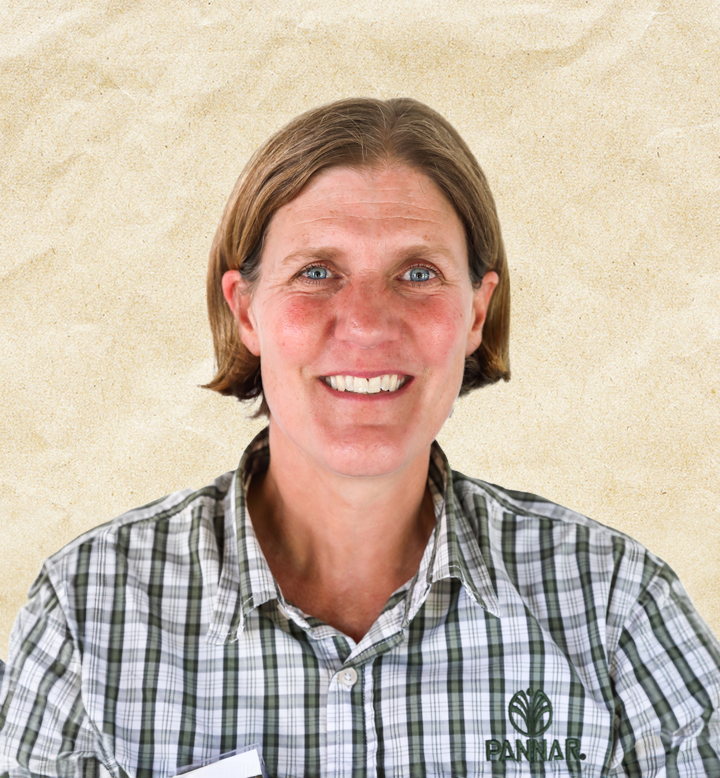
Article published on foodformzansi.co.za on 13 October 2025
Author: Duncan Masiwa
For every farmer, planting season brings both hope and risk. The success of a maize crop begins long before the green shoots appear above the soil. It starts with seed germination.
According to Kerry Rowlands, seasoned field agronomist for Pannar Seed, maize seed is, at its core, a dormant plant embryo. Its only job is to germinate.
“Once that happens, everything else depends on external factors like soil moisture, soil fertility, and weather. Germination is the launch pad for the entire growing season,” explains Rowlands.
When germination goes well, farmers set themselves up for a strong start and the potential for high yields. But when it fails, the crop is already behind before the plants even emerge.
Rowlands compares it to a hundred-metre sprint: “It’s kind of like tripping at the start line. Understanding germination helps farmers make informed decisions about planting conditions, timing, and inputs.”
Knowing what happens inside the seed can make a big difference when troubleshooting problems in the field. Germination begins with water absorption, a process known as imbibition, which rehydrates the embryo and activates a hormone called gibberellic acid.
This hormone converts the starch stored inside the seed into sugars, providing the embryo with the energy it needs to grow. The seed coat then softens and swells, allowing the embryo to break free.
The first visible sign of germination is the emergence of the radicle, the primary root, which pushes down into the soil and anchors the seedling. At this stage, the embryo also starts absorbing nutrients such as phosphate and zinc.
Phosphate is essential for energy transfer and DNA production, while zinc supports starch conversion and the production of hormones like auxin, which drives cell division and elongation. Cytokinins, another group of hormones, are also produced at this stage and play a critical role in cell division and differentiation.
As the radicle secures the seedling, the plumule pushes upwards to form the shoot system. The cotyledon, or seed leaf, nourishes the seedling until it can photosynthesise on its own. Soon after, true leaves emerge, and the plant transitions into independent growth.
From there, it matures into a maize plant with tassels and ears, ready to produce the next generation of seeds. “It’s a beautifully orchestrated process, and every step matters,” Rowlands notes.
Creating the right environment for this process comes down to what Rowlands calls the “terms and conditions” for germination. These are planting depth, soil moisture, and nutrient support.
Planting depth plays a crucial role because it directly affects soil temperature. Seeds planted too shallowly are exposed to large temperature fluctuations of up to fifteen degrees Celsius daily, which increases the risk of chilling injury.
Deeper planting, on the other hand, provides more stable conditions with temperature swings of less than five degrees. But farmers must strike a balance: planting too deep delays emergence, while planting too shallow leaves seeds vulnerable to drying out or damage.
Rowlands advises farmers to measure soil temperature at planting depth, not at the surface, as that is where the seeds will live and grow. Measurements should be taken just after dawn, when the soil is at its coldest, to give an accurate reading.
“Ideally, the soil temperature at planting depth should be above ten degrees Celsius, but for optimal germination, you want to aim for over sixteen degrees for five consecutive days,” she says.
Planting in cold soil not only slows down germination but also increases the risk of imbibitional chilling injury. This happens when seeds absorb cold water in the first twenty-four to twenty-six hours after planting. The cells of the swollen seed can burst if the water is too cold, leaving the seeds damaged or deformed.
“If you see corkscrew-shaped mesocotyls, that means germination started, but cold injury stunted the shoot. The best way to prevent it is by planting only when soil temperatures are consistently warm and stable,” Rowlands explains.
Moisture is the second critical factor. Seeds need enough water to swell and grow, but they also need oxygen. Overly wet soils deprive them of air, effectively suffocating the seedlings, while dry soils prevent them from absorbing enough water to germinate.
“Think of it like a wrung-out sponge; that’s the perfect environment,” says Rowlands.
When the balance is wrong, seeds may swell but fail to develop, or stressed seedlings may show signs of necrosis and poor establishment.
Nutrient support is the third condition, and it can be especially important in stressful environments. Starter fertilisers containing phosphate and zinc give seedlings an early advantage. Rowlands recommends using a pure phosphate fertiliser that is safe for in-furrow use to prevent fertiliser burn, with smaller particles to aid absorption. For zinc, fully chelated forms are the most effective, particularly in high pH soils.
“Zinc acts like oil in an engine. It helps everything run smoothly. It boosts plant height, leaf length, and leaf area, all of which contribute to stronger, more resilient seedlings,” she says.
Farmers are also turning to biostimulants and plant growth regulators to further support early development. Biostimulants such as humic acid, fulvic acid, and kelp improve soil structure, increase nutrient uptake, and help plants cope with stress.
Plant growth regulators – hormones like auxins, cytokinins, and gibberellins – guide processes such as cell division, elongation, and differentiation.
“Think of them as performance enhancers; not synthetic shortcuts, but natural aids that boost plant vigour, speed up emergence, and improve establishment,” Rowland says.
For farmers working towards high yields, the key lies in getting germination right. This means paying close attention to planting depth, carefully monitoring soil temperatures, ensuring proper seed-to-soil contact, and giving seedlings the early nutrient support they need.
“These steps may seem simple, but they lead to robust plants, uniform stands, and ultimately, better harvests. If you can get germination right, you’ve already won half the battle.”